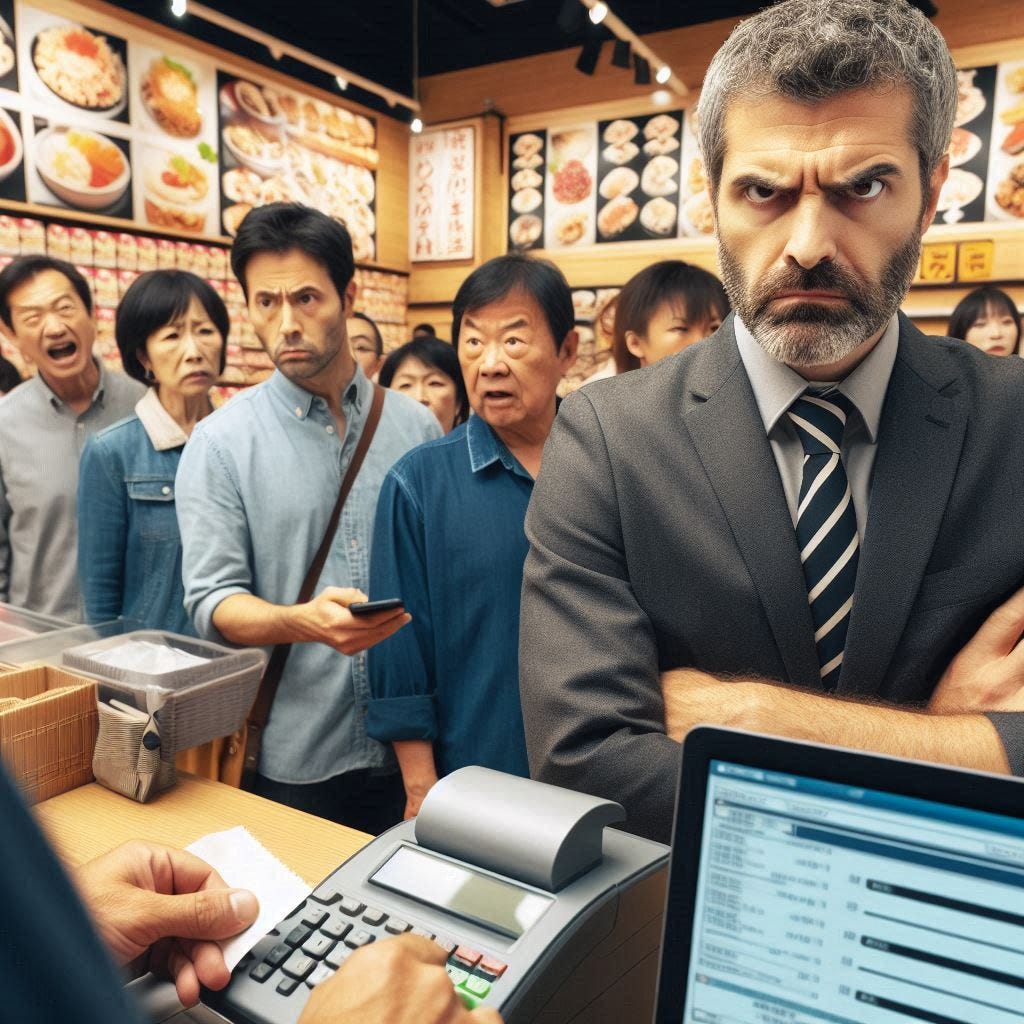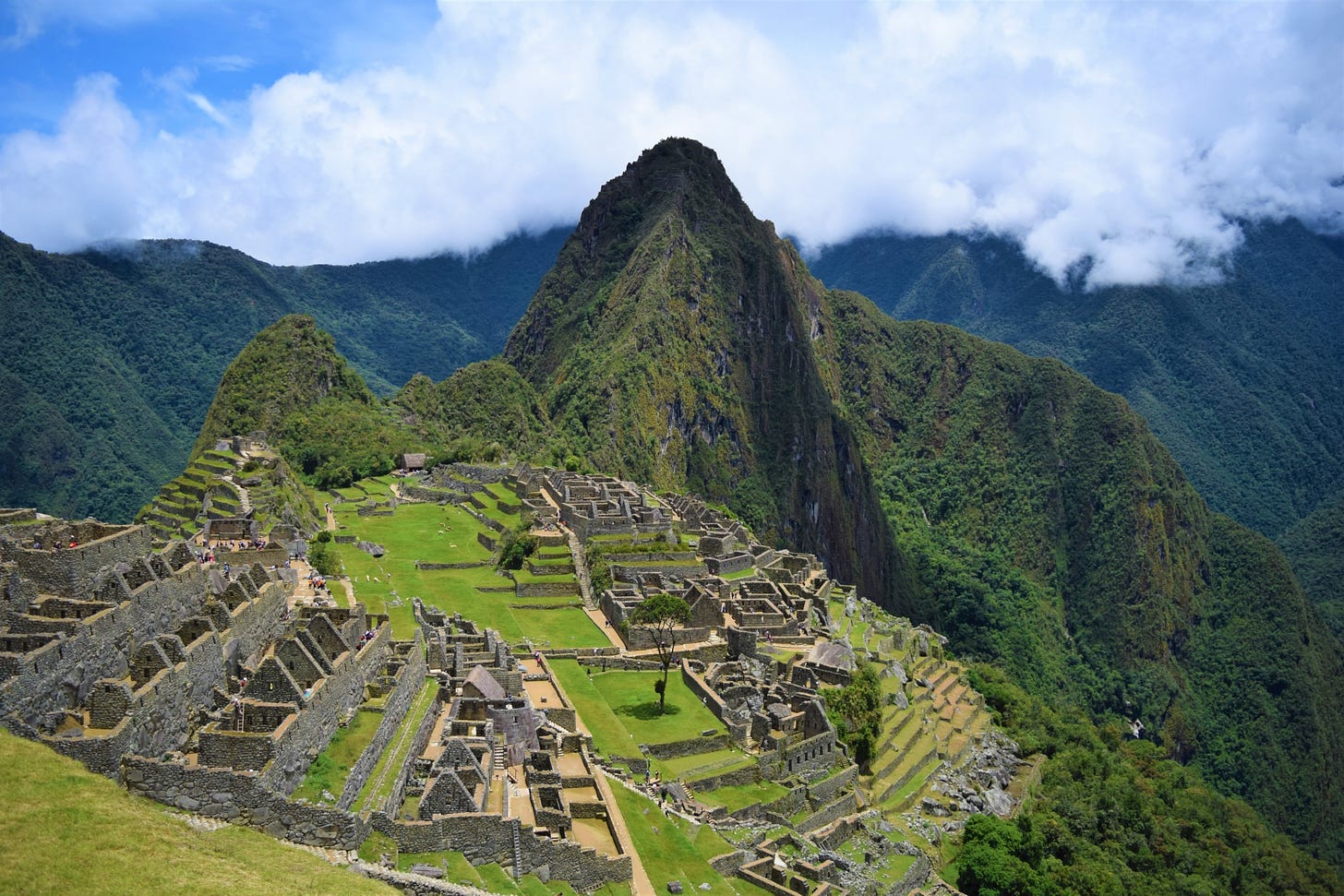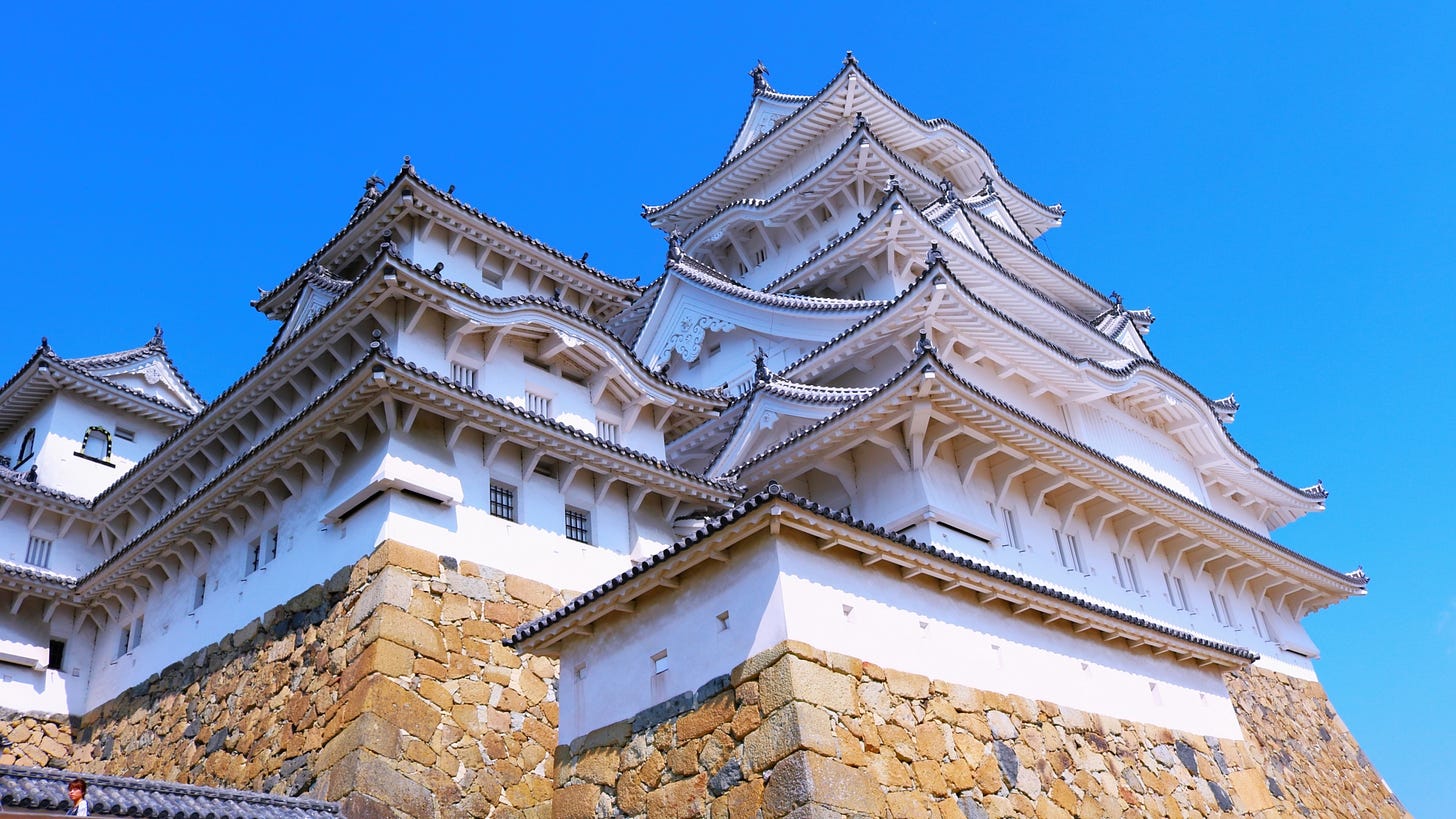

Discover more from Real Gaijin
Japan Struggles to Implement Dual-Pricing for Foreign Visitors
To offset the costs of perceived over-tourism, city governments and local merchants are experimenting with various upfront pricing models that raise suspicions of discrimination against foreigners.

Listen to and/or watch the “Read My Lips Podcast Series“ version.
What’s new: While this is still all just talk for now, on April 16, 2024, the mayor of Himeji City, Hyogo Prefecture, Hideyasu Kiyomoto (清元秀泰), proposed that the admission fee for foreigners (non-residents) to Himeji Castle (姫路城)1, a UNESCO World Heritage Site and national treasure, be quadrupled compared to the price for residents of Japan.
The current entrance fee for visitors over the age of 18 is 1,000 yen (approximately US$6.33), regardless of nationality. If Kiyomoto's proposal is adopted, foreign visitors will pay about $30 and citizens and other residents of Japan will pay $5 less than now. So the difference would be about 4 times.
Himeji is also considering charging a fee for the San-no-Maru Hiroba (三の丸広場), a 14,500-square-meter plaza on the south side of the castle that is currently open to the public free of charge. Foreign visitors would pay a nominal fee, while residents of Japan would not be charged.
The purpose is to secure the financial resources necessary for the preservation of the castle, which is one of the most popular tourist attractions in the country. Kiyomoto explained that additional funds are needed to protect the castle as a cultural asset, pay for ongoing repairs, cover the cost of human resource development to pass on the skills of traditional craftsmen, and strengthen the building's earthquake resistance.
In the last fiscal year, more than 1.48 million people (including myself) visited this striking, original castle, which dates back to 1333. The castle has been featured extensively in foreign and Japanese movies. It is a "must see" for anyone visiting the country.
According to city statistics, the number of foreign visitors to Himeji Castle reached a record high of approximately 452,000 in the last fiscal year, an estimated 30% of the total number of people who visited the castle in the previous 12 months.
Why it matters: In the midst of the ongoing dramatic devaluation of the Japanese yen against the U.S. dollar and the euro, this news is the latest development in a series of related stories about whether to implement dual-pricing schemes to charge overseas visitors additional fees at a time when many in Japan perceive an increase in "over-tourism" at certain popular spots around the country. Assuming that a consensus can be reached to implement different price levels based on residency, the method of implementing such a system equitably would need to be considered. Options include posting prices at different levels, providing discounts to a single posted price after verification of residency status, and imposing tourist taxes versus trying to implement site-specific pricing strategies.
In the background is the question of who should pay for perceived over-tourism, walking a fine line between impressions of persistent xenophobia and the desire to welcome foreign tourists.

State of play: Himeji's dilemma is not unique. Some merchants have already adopted dual-pricing policies.
Controversial Seafood Restaurant in Shibuya: In April this year, a seafood izakaya2 opened in Shibuya, Tokyo, where customers can grill and eat seafood themselves. Since its opening, the restaurant has divided its prices between domestic customers (Japanese and foreigners living in Japan3) and foreign tourists visiting the country. For visiting tourists, for example, the all-you-can-eat, all-you-can-drink price is 6,578 yen ($41.68) for lunch on weekdays and 7,678 yen ($48.74) for dinner Monday through Friday. Domestic residents receive a discount of 1,100 yen ($6.97) per person off the base price. The "double price" is posted on the menu at the entrance of the restaurant, and the prices are also displayed separately on their Internet reservation screen.
"I noticed that there was a 'Japanese resident' price when I made a reservation. With the weak yen, there are a lot of foreign tourists, and many restaurants charge prices that seem to be set for foreigners, but I appreciate that Japanese people can get a discount." - A Japanese customer at the restaurant
The restaurant justifies its dual-pricing policy by saying that most of its staff have difficulty communicating with foreign visitors, and that many foreigners do not show up despite making reservations in advance.
"I think it was easier to gain the understanding of our customers because we gave a discount to local residents rather than raising the price for foreign tourists. So far, the Japanese customers have been favorable, and the foreigners who actually enter the restaurant understand the double price, so we haven't had any major problems." - Mr. Naogo Yonemitsu, owner of the restaurant
Alternative to Dual Pricing Schemes: At an okonomiyaki4 restaurant in Hiroshima, every Friday night has been designated as "Prefectural Citizens' Day" since April this year, and the restaurant has begun to accept only local customers and people who have visited the restaurant in the past on that day each week.
Okonomiyaki restaurants in Hiroshima have seen a significant increase in foreign customers since Covid. Due to the weak yen and their location near tourist attractions, more than 80% of their customers are now foreign tourists. On the other hand, local regulars found it difficult to enter this restaurant.
"The restaurant was not originally intended for tourists, but for locals who like to interact with other locals. I believe that inbound tourism will not last forever and that we are in a bubble right now. Except for Prefectural Citizen's Day, we do everything we can for foreign customers who come to our stores. We always ask, ‘Where are you from?’ and try to greet them in their native language.” - Okonomiyaki restaurant owner in Hiroshima
Japan's Consumer Affairs Agency has, by the way, ruled that dual-pricing is legal.

The other side: Japan is certainly not alone in dealing with the effects of over-tourism. Earlier this week, Barcelona, Spain made headlines when some of its citizens, fed up with how tourism has caused overcrowding and rents to skyrocket beyond the reach of many local residents, "attacked" visiting tourists in cafes with water pistols.
While such an approach may be "too little, too late" as seems to be the case in Barcelona, Japan could impose a "tourism tax" as has been effectively implemented elsewhere in the world.
Upfront Dual-Pricing in Egypt and Peru: The entrance fee to the Pyramids of Giza, Egypt's largest tourist attraction, is currently 60 Egyptian pounds ($1.25 or 197 yen) for local and “Arab” tourists, while the fee for other foreign tourists is nine times higher at 540 Egyptian pounds ($11.26 or 1,777 yen). Students can enter for half price.
The entrance fee to Machu Picchu, a World Heritage Site in Peru, South America, varies depending on whether you are a resident of Peru, Colombia, Ecuador, and Bolivia or another foreign country. The general admission fee is US $575 (9,996 yen), but residents of these four South American countries only need to pay US $28 (4,419 yen). Fees are lower for minors and students.
Tourism Taxes Tacked on to Nightly Hotel Charges in Barcelona and Fukuoka: In Barcelona, one of Europe's leading tourist cities, 3.25 euros ($3.55 or 560 yen) per night per person is added to the accommodation fee for tourists staying in hotels and other facilities. Since April 1, 2020, the city of Fukuoka in Kyushu has imposed a similar "accommodation tax" of a flat 200 yen ($1.27) per night per person for total room costs of less than 20,000 yen ($126.70) per night, and 500 yen ($3.17) per night per person for hotel rooms costing more.
Flat Rate Charged at the Airport in Bali and Bhutan: In the Indonesian tourist mecca of Bali, a tourist tax was introduced in February this year to protect its beautiful beaches and temples and to fund tourist services. Foreign tourists pay 150,000 rupiah ($9.31 or 1,469 yen) through a special website or at a counter set up at the airport.
In the Himalayan Kingdom of Bhutan, the government raised the tourism tax from $65 (10,259 yen) to $200 (31,565 yen) per day per person last year to control the growing number of tourists and earn foreign exchange. However, since the number of tourists last year was only a third of what it was before Covid, the government subsequently cut the tax in half to $100 (15,783 yen). That's still pretty hefty, but it can be positioned as a contribution.

Commentary: In principle, implementing a surcharge to help offset the rising costs of handling the recent influx of foreign visitors to Japan seems reasonable.
However, I am opposed to doing this in a piecemeal fashion with separate schemes for both public and private venues such as museums, restaurants, and other tourist attractions. The potential for sending the wrong message could be mitigated by providing a concise, straightforward explanation to justify the fee. By normalizing and effectively validating a confusing hodgepodge of dual-pricing systems, discounts, flat fees for certain merchants and tourist sites, etc., Japan is setting itself up for the potential misperception of discrimination against foreigners.
As a long-term permanent resident of Japan, I also do not want to have to constantly show my ID everywhere I go in Japan. Even now, it is a hassle to explain to hotel clerks, who often demand to see my passport, that I would prefer not to have my resident zairyu card photocopied when I check in.
On the spectrum of possible solutions, I fall into the camp of charging a fairly sizable flat tourist tax at the airport, as the Kingdom of Bhutan has done, with some sort of exemption for business travelers. It could also be paid online through a special app or even built into the price of an international airline or cruise ship ticket like a fuel surcharge. Such an approach could be clearly explained in multiple languages on a variety of media to ensure a clear, easy-to-understand message justifying the surcharge. Perhaps a fee of 5,000 yen ($31.67) per person per night might be considered reasonable.
If someone can come up with a way to distinguish short-term business travel from leisure travel by non-resident foreigners, that would be best. If not, then charge business travelers, as well.
This approach would be a relatively simple means of generating additional tax revenue that would not require an overly burdensome collection mechanism.
Even after reducing the initial fee by 50%, the Bhutanese government was right to make a bold statement by imposing a significant fee to cover the ongoing costs of supporting infrastructure maintenance and improvements. The key, however, is how the Kingdom of Bhutan distributes this tax revenue to its tourism sector. If an equitable approach can be implemented, such a program could be used to streamline how funds are channeled to the tourism industry. A cost-effective solution would be to manage the distribution of funds through tax credits.
To sustainably reduce the perceived negative impact of over-tourism, it is more important to improve the management of visitor flows across the country. This can include spreading out tourists by promoting lesser-known destinations and attractions within a region or using time-based ticketing to avoid overcrowding at popular sites.

What do you think? Should Japan introduce dual-pricing for non-resident foreign visitors to offset the costs of perceived over-tourism? Would a tourist tax be a better solution? How about something else? All responses are completely anonymous, even to the author.
Links to Japanese Sources: https://www.sanin-chuo.co.jp/articles/-/593963, https://www.sanin-chuo.co.jp/articles/-/607259, and https://www3.nhk.or.jp/news/html/20240619/k10014484411000.html.
#DualPriceStructure #CustomerServiceFee #TourismTax #overtourism #HideyasuKiyomoto #二重価格 #接客コスト #県民の日 #オーバーツーリズム #観光税 #清元秀泰
Please note that you can subscribe to Real Gaijin for free. If you are so inclined, you can also purchase an annual subscription for a relatively small fee.
However, I understand that even the lowest level of annual subscription allowed by Substack may seem too high for many. If you just want to buy a coffee for Real Gaijin (or maybe a green tea), you can also make a small donation here:
https://buymeacoffee.com/realgaijin
All levels of support - including just liking a particular article and/or leaving a comment - are very welcome. Thanks again for reading.
While Real Gaijin lives in Substack, you can also find Real Gaijin on a few other platforms (listed in alphabetical order).
https://www.instagram.com/real_gaijin_on_substack/
https://www.threads.net/@real_gaijin_on_substack
https://www.tiktok.com/@real.gaijin
https://www.youtube.com/@RealGaijin
https://www.linkedin.com/in/mark-kennedy-5b50b71/
The castle is often referred to as Hakuro-jō (白鷺城 meaning "White Egret Castle") or Shirasagi-jō (白鷺城 meaning "White Heron Castle") because of its white exterior and supposed resemblance to a bird in flight.
Japanese-style bar/restaurant.
The discount is available to those who can be identified as "foreign residents in Japan" by checking their resident zairyu card or other means, even if they do not speak Japanese.
A popular pan-fried dish that consists of batter and cabbage.
Charged in USD rather than Peruvian Sol (PEN).
Subscribe to Real Gaijin
Unveiling the Real Japan: An American Expat's Inside Look | Hot takes, commentary, and unfiltered insights on life as a foreigner in Japan.


















There should be a 3rd tier of pricing for AI generated non-residents :-)
金持ちしか旅行できないようにするんですかね。別にコスト掛けなくてもポイ捨てしなくて、時間守ってルール守ればいいだけなんですけどね。